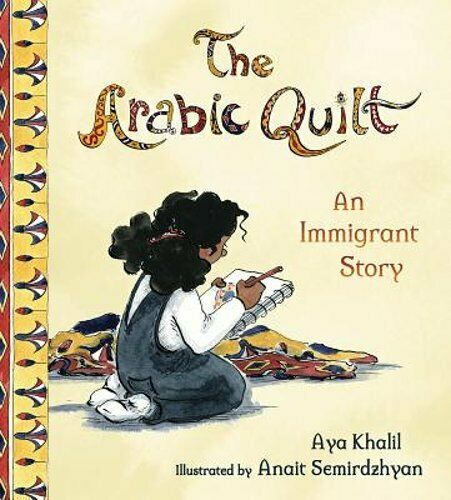The Arabic Quilt : An Immigrant Story
 The Arabic Quilt
The Arabic Quilt
Picture Book
February 4, 2020
36

That night, Kanzi wraps herself in the beautiful Arabic quilt her teita (aunt) in Cairo gave her and writes a poem in Arabic about the quilt. Next day her teacher sees the poem and gets the entire class excited about creating a "quilt" (a paper collage) of student names in Arabic. In the end, Kanzi's most treasured reminder of her old home provides a pathway for acceptance in her new one. This authentic story with beautiful illustrations includes a glossary of Arabic words and a presentation of Arabic letters with their phonetic English equivalents.
Egyptian-born author Aya Khalil has focused her picture book on immigrant children who may love the traditions of their family and homeland, but seek desperately to fit into their American world. On her first day in third grade in a new school, Kanzi hears teasing behind her back as her mother says, “habibti,” an Arabic term of endearment rather like “sweetie.” A thoughtful teacher provides support, encouraging Kanzi to bring the Egyptian quilt from her grandmother to share with the class. That leads to a class quilt with each student’s name written in Arabic followed by another quilt with names in Japanese. Children – including those initially teasing Kanzi – realize languages are a beautiful thing: “They can truly unite us.”
The Arabic Quilt includes a glossary of Egyptian terms as well as English words derived from Arabic (zero, algebra, cotton). Additional information about the quilting tradition in Egypt would have been helpful, although much of that is available online. Kanzi’s full quilt is seen on the end papers with very typical Egyptian borders and sailboats. Several details in the story are both accurate, progressive and noteworthy. Kanzi’s mother wears a hijab when she visits the school but not at home. Both her mother and father share in making Kanzi’s lunch, which she wishes were something American like peanut butter and jelly rather than Egyptian kofta. Casual illustrations include children of different races in conversation, even though they aren’t the focus of the story or the artwork: young readers often pick up on such social messages even if they are in the background. Anait Semirdzhayan’s graphic-novel style illustrations in pen and watercolor are filled with color and activity.
The book offers many conversation starters for teachers or parents – the diversity and importance of cultural or family traditions, the value of speaking multiple languages and shared activities to help foster mutual respect.
Karen Leggett Abouraya
Published in Africa Access Review (July 7, 2020)
Copyright 2020 Africa Access
